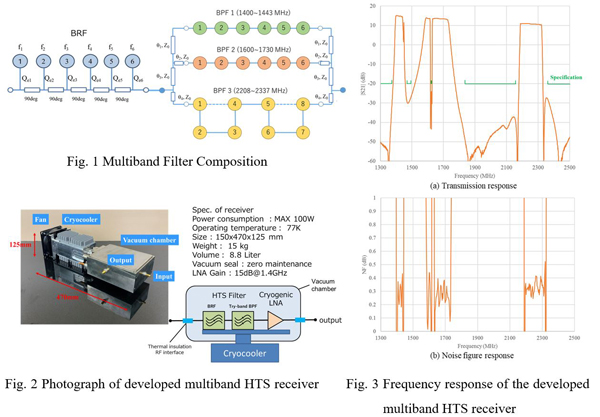ED5-3-INV
Multiband high-temperature superconducting filter for radio observatory
Dec.3 09:50-10:15 (Tokyo Time)
Wireless System Laboratory, Corporate Research & Development Center, Toshiba Corporation, Japan1
The objective of radio astronomy is to elucidate astronomical phenomena through the utilization of radio telescopes that can detect very weak radio-wave signals of various frequency bands emitted by celestial bodies. However, as frequency resources become depleted owing to the recent rapid increase in the number of smartphones and other wireless communication devices, it has become necessary to share the available frequency bands with these wireless devices. In response to this situation, we have developed a compact multiband high-temperature superconducting (HTS) filter for radio telescopes. Capable of observing multiple frequency bands simultaneously, this HTS filter uses a low-loss multiband HTS filter to suppress radio-frequency interference (RFI) caused by other wireless devices. Experiments with a prototype multiband HTS receiver have shown high sensitivity, with a reduction in RFI of more than 40 dB and a noise figure (NF) of less than 0.4 dB.
[1] T. Kawaguchi, et al. “HTS Quad-band High-sensitivity Receiver for a 4.5-m Radio Telescope,” EuMW2019, Oct. 2019.
Keywords: Filter, Multiband, High-temperature superconductor, Radio telescope
